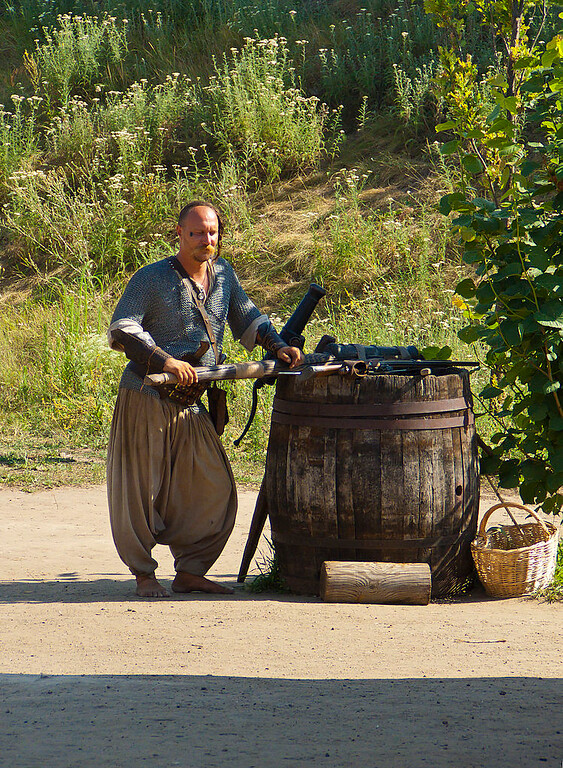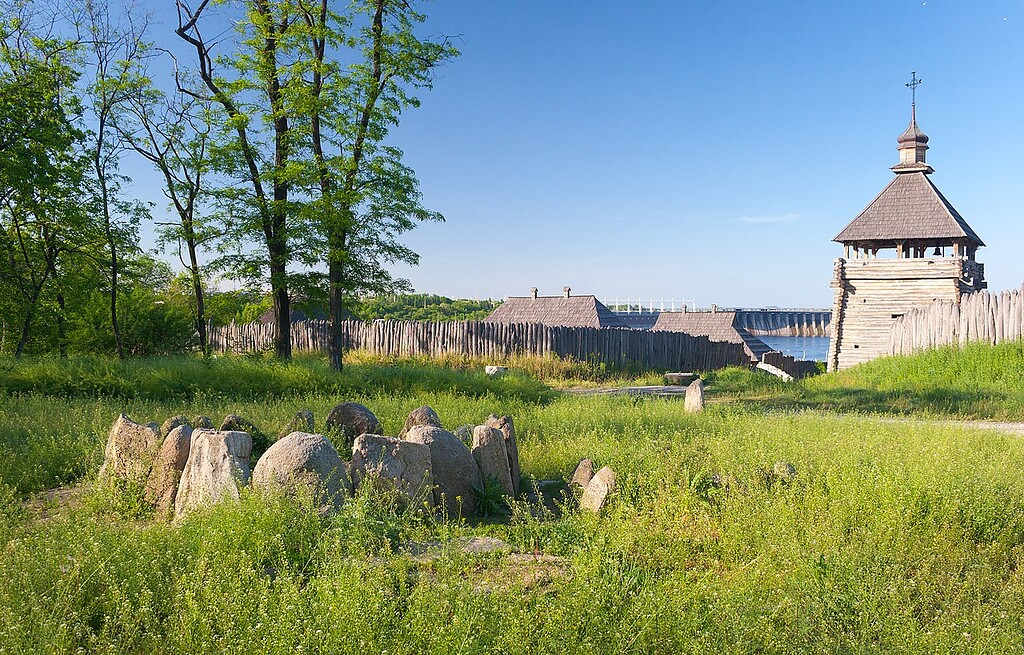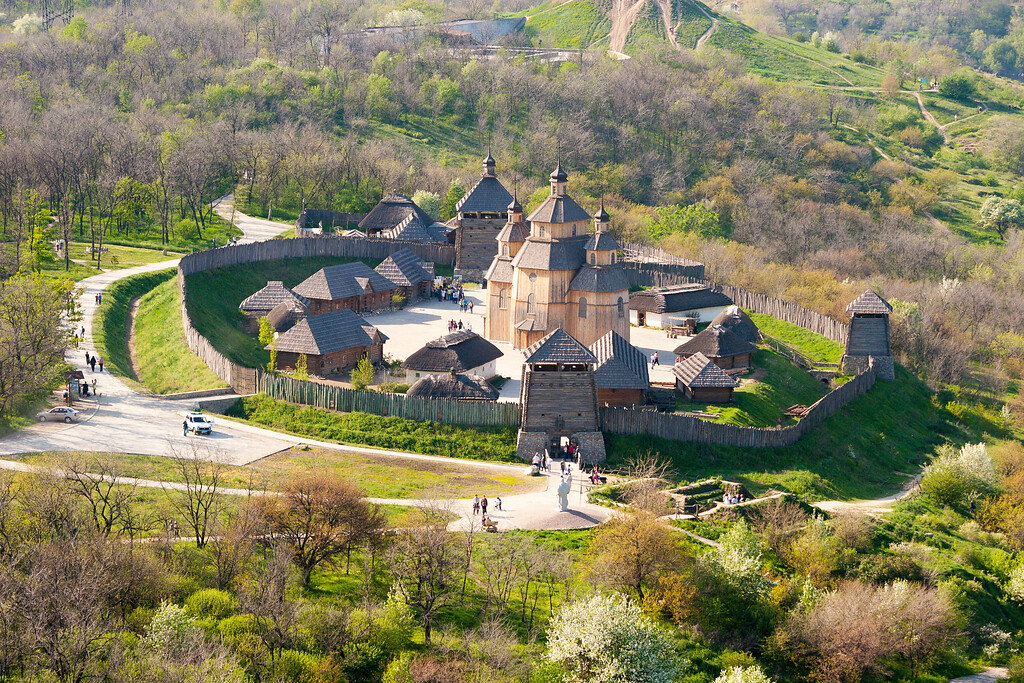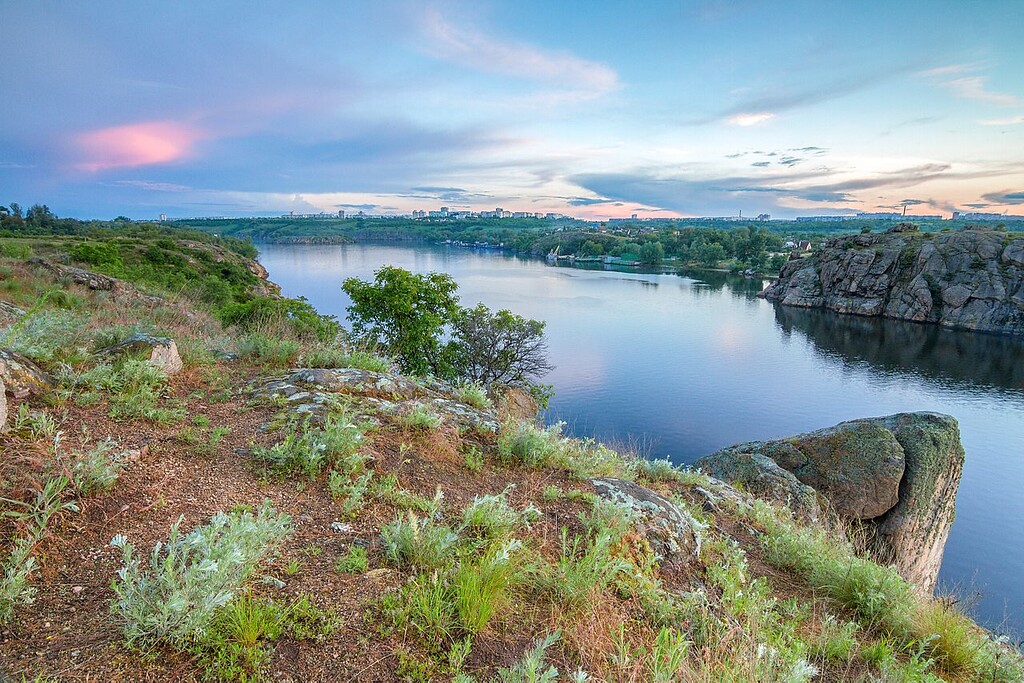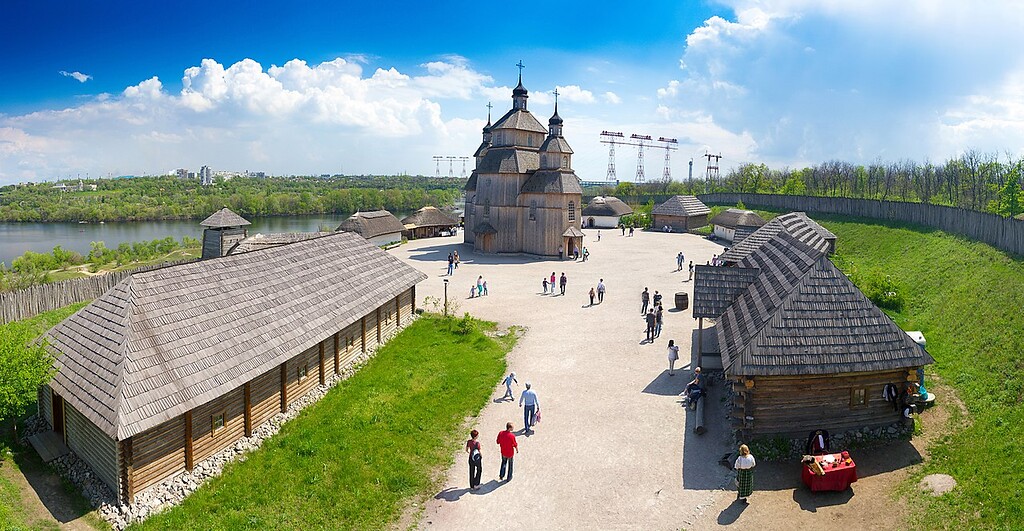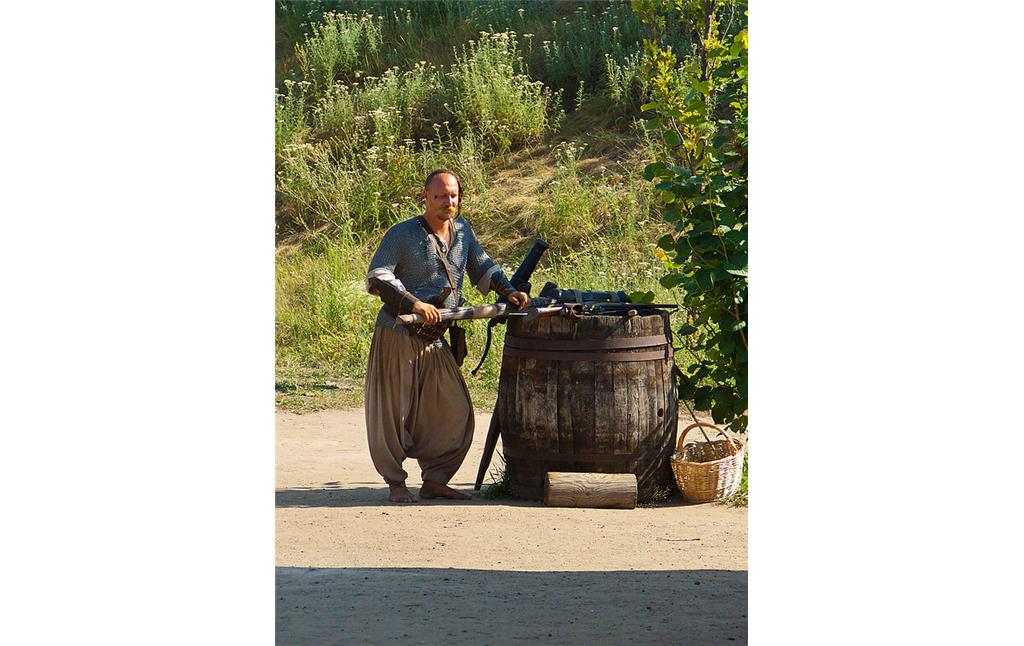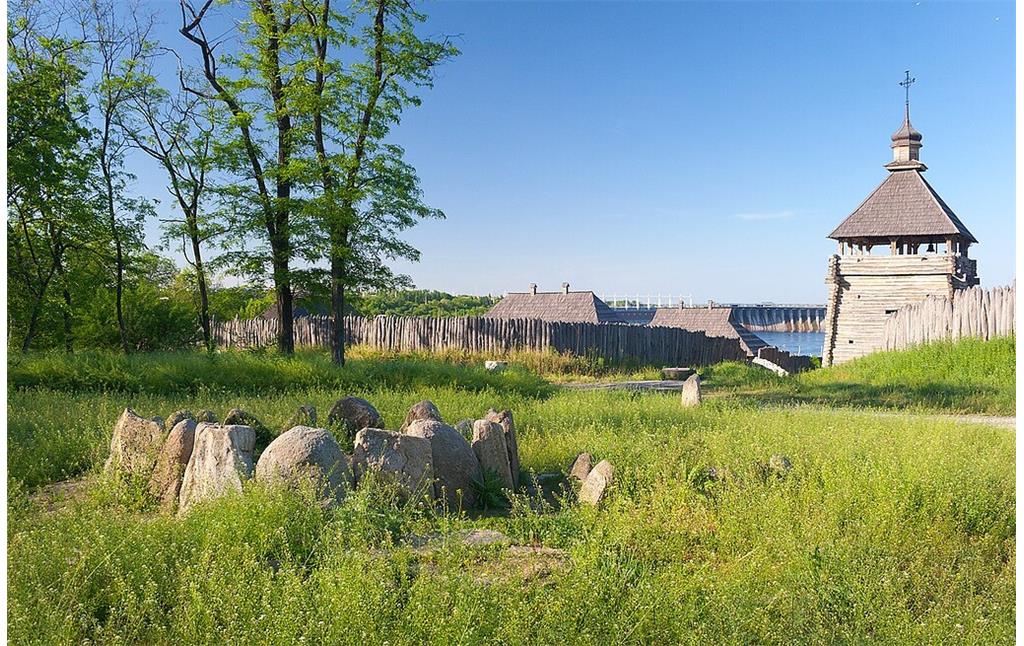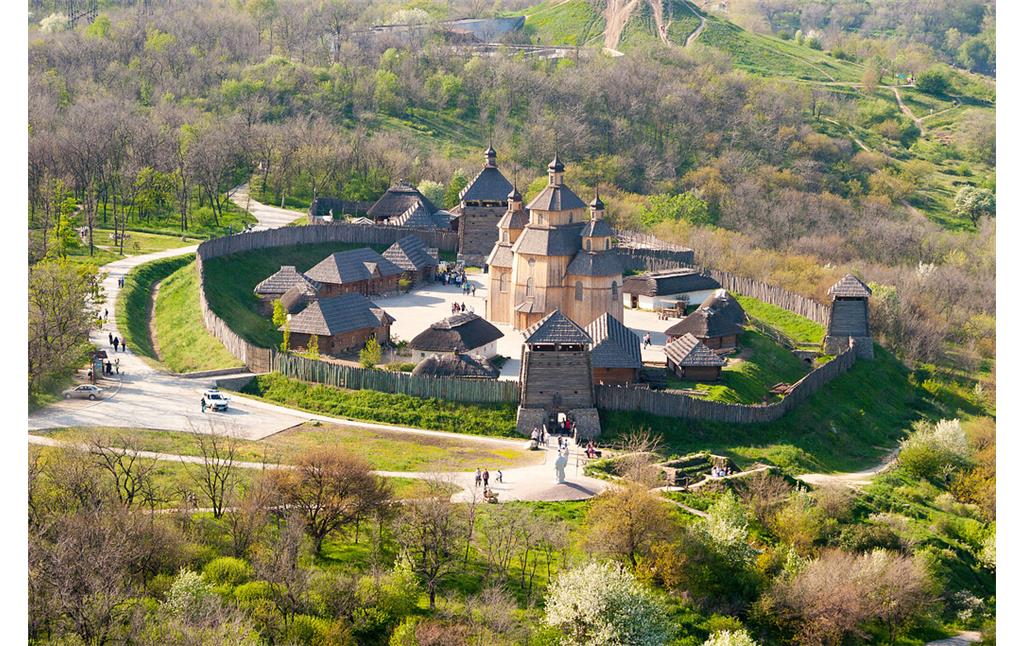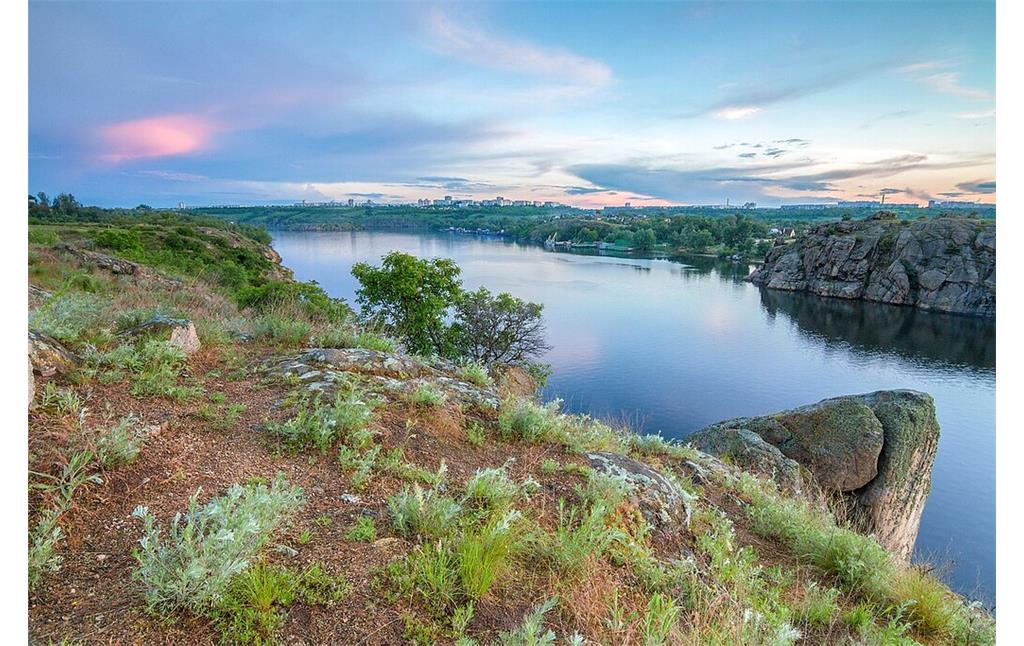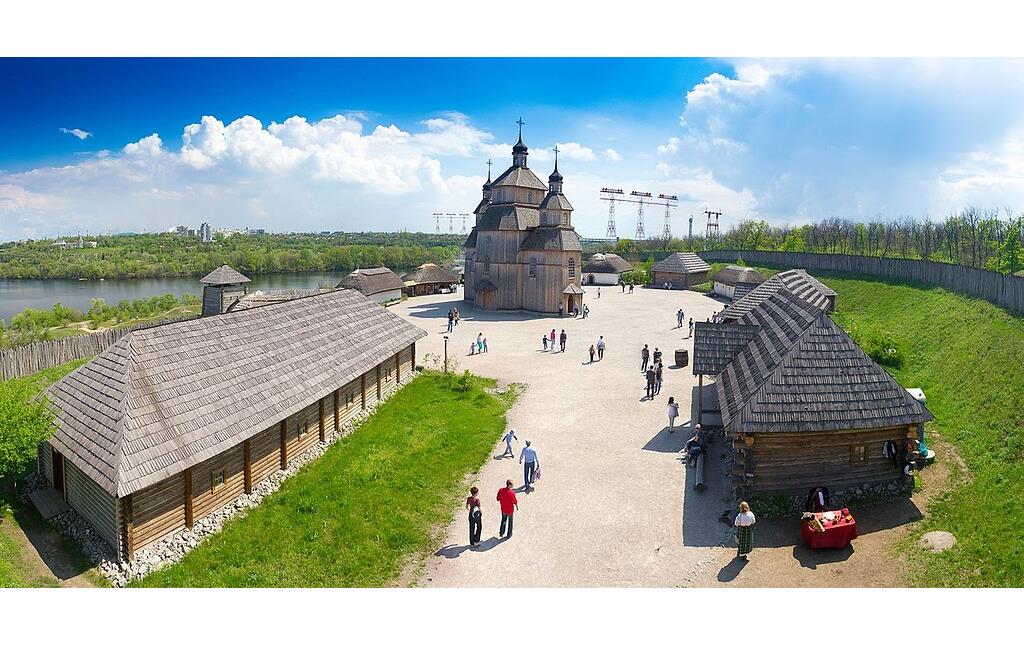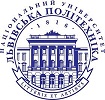
There are many versions of the origin of the name of the island, but most researchers derive the name from the Turkic-Polovtsian „ort“, „orta“, which means „middle“ (in the middle of the Dnipro). Among a number of versions, the name is derived from „greyhound“ - „dog“, from the ancient Slavic god Horus.
The name of the island first appears in the work of Emperor Constantine the Crimson „On the management of the empire.“ In various lists of this work, Khortytsia is called the island of St. Gregory and the island of St. George. As for Gregory, it is believed that he was the Armenian educator St. Gregory (257-331).
The name Khortytsy?Island was first mentioned in connection with the campaign of Prince Sviatoslav Izyaslavych (1113) against the Polovtsians in 1103.
In the Resurrection Chronicle in 1223 the island was named Varangian Island. Erich Lyasota (1550-1616) and Guillaume (Wilhelm) Levasser de Boplan (1595-1685) named is Khortytsia and the Polish chronicler Marcin Bielski (1495-1575) wrote Khorchyk. Vasily Zuev (1794) and Prince Myshetsky (1716-1773) called the island Khortyts. In the atlas of the Dnipro from 1786, Admiral Pushchin wrote Khytrytsky and in Rigelman's name, Hordetsky Island.
History
From ancient times Khortytsia Island has attracted people. They first appeared on the island in the Paleolithic and Mesolithic, as evidenced by the findings of flint products of that period. Archaeological research shows the settlement of the island and the surrounding area in the Neolithic (700-300 BC). Since then, people have never left the island and there are traces of every historical period today.
The beginning of the twentieth century was characterized by important events for the country and the theater of hostilities for the White and Red armies, as well as the troops of the Ukrainian People's Republic. In April 1918, during a meeting of troops of the Ukrainian People's Republic, before the Crimean campaign of Colonel Peter Bolbochan (1883-1919), Khortytsia became a place of unity of fighters from all Ukrainian lands for a newly independent state. The celebrations of that time became a kind of „prologue“ to the unification of the Ukrainian People's Republic and the Western Ukrainian People's Republic on January 22, 1919.
During World War II, Khortytsia was the scene of brutal battles. It was here, during the two-month defense of Zaporozhye from the troops of Germany and Romania, in the autumn of 1941 that one of the first successful counterattacks by Red Army units took place. After two years of occupation, the island was finally liberated from the enemy at the turn of 1943 and 1944.
Nature
From a geological point of view, Khortytsia is part of the Ukrainian Crystal Shield. The Dnipro Valley near Khortytsia is the only preserved section of the porous part of the river. Prior to the construction of the Dnipro GDP, the Dnipro riverbed crossed nine rapids. There were no rapids near the island of Khortytsia, but the preserved rocky islands and rock structures in the northern part of the island have characteristic features of the rapids. Khortytsia and the adjacent islands have been declared a geological reserve „Dnipro Thresholds“
The flora of Khortytsia has more than a thousand species of higher plants, of which fifteen percent are endemic. The island faces a variety of natural areas: grass-feather steppes, oak and coniferous forests, floodplain meadows. Due to the special microclimatic conditions formed by the mighty river, plant communities differ significantly from the mainland.
On average, the height of the snow cover is 14 cm, the highest -35 cm. The average annual temperature is +9.0 ° C, the average temperature in July is +22.8 ° C, and in January -4.9 ° C. In terms of moisture, the territory of Khortytsia belongs to the arid zone.
What to do on the island of Khortytsia?
The main heritage of the island is the historical and cultural complex „Zaporizhzhya Sich“. Here are some ideas on what to do on Khortytsia:
- visit the show of the equestrian theater „Zaporizhzhya Cossacks“;
- learn about the history of the Cossacks and see the costumes and household items of that time in the museum;
- see all local attractions
What to see on Khortytsia?
Zaporizhzhya Sich is the main attraction for which most tourists come to Khortytsia. There all the key places of Cossack life are displayed on the island that facilitate the immersion in the 17th and 18th century!
- Scythian estate - in this part of the complex the real Scythian mounds and Cimmerian sculptures are presented. And from here there is a stunning view of Khortytsia and the districts.
- Cossack Battle Theater - here you can look at the art of Cossack battle, and maybe try to master them.
- The Cossack Circle is a glade where Shrovetide is usually celebrated.
- Arched bridge - from here you have a wonderful view of the Dnieper, hydroelectric power plants and rocks of Khortytsia.
(Yelyzaveta Brailko, Lviv Polytechnic National University, 2022. This object was created during the Russo-Ukrainian War in April/May 2022)
